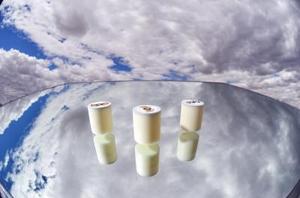SensorsMiniature sensors to advance climate studies, battlefield detection
Self-sealing valves are not only better for collecting reliable climate information – they also increase data reliability for airborne industrial and battlefield gas detection and point-of-contact medicine

The microvalve allows a sealed sample to elimate contamination // Source: sciencecodex.com
An air sampler the size of an ear plug is expected cheaply and easily to collect atmospheric samples to improve computer climate models.
“We now have an inexpensive tool for collecting pristine vapor samples in the field,” said Sandia National Laboratories researcher Ron Manginell, lead author of the cover story for the Review of Scientific Instruments, the often-cited journal of the American Institute of Physics.
A Sandia National Lab release reports that the novel design employs a commonly used alloy to house an inexpensive microvalve situated above the sample chamber.
When heated, the alloy — a kind of solder — melts and flows, blocking the inlet hole. When cooled, the alloy resolidifies into an impermeable block that seals the gas sample inside the inert chamber below. Low cost should make widespread distribution of these sensors possible, while the noncontaminating nature of the design helps meet stringent technical requirements.
The release notes that better data collection is important because uncertainties in fact-gathering is one reason climate models reach a variety of conclusions. Winds may blow gases toward or away from a sampling site, gas contents at any location may vary by the hour and by the season, and samples collected by containers in the field may evaporate or become corrupted before analysis in a distant laboratory. Compounding the problem are difficulties in widely distributing sensors, which can be heavy, fragile and require expensive tending by humans.
The Sandia phase-change micro-valve sensor is light, cheap, tough, inexpensive to fabricate, and simple to operate. It takes in gas in seconds through a tiny hole about the diameter of three human hairs. The hole closes when a tiny, low-energy hotplate on the canister’s surface melts shut the alloy through which the hole passes, sealing it.
Because the little container does not outgas internally, the trapped sample remains uncorrupted until analyzed in the laboratory. The miniature sensor’s simplicity means it could travel in UAVs or as unmonitored cargo in atmospheric balloons. The poorest countries could afford to play a role in global climate data collection.
Sandia researcher Mark Ivey oversees the operation of sounding balloons that carry sensors skyward for the Department of Energy in Oliktok Point and Barrow, Alaska. The miniature blimps, able to sample particles around which cloud droplets form, are tethered to winches that reel the soaring balloons back in. Getting sensors to Barrow, a place no highway visits, then into the air and back to a
